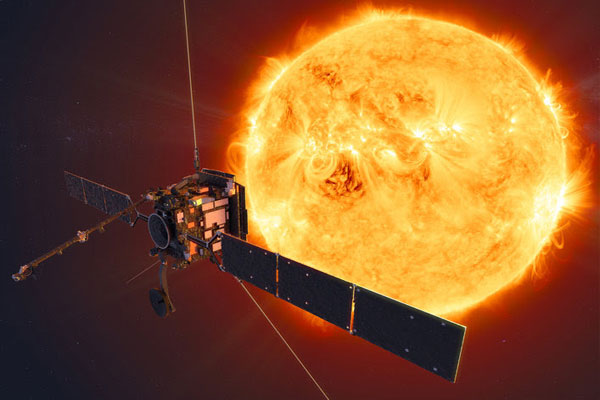Washington: NASA and the European Space Agency (ESA)’s Solar Orbiter mission to snap the first pictures of the Sun’s north and south poles is scheduled to begin on Sunday during a two-hour launch window that opens at 11.03 p.m. EST (9.33 am Monday, India time).
The two-ton spacecraft will launch from Florida on a United Launch Alliance Atlas V rocket.
Seeking a view of the Sun’s north and south poles, Solar Orbiter will journey out of the ecliptic plane — the belt of space, roughly aligned with the Sun’s equator, through which the planets orbit.
Slinging past Earth and repeatedly around Venus, the spacecraft will draw near the Sun and climb higher above the ecliptic until it has a bird’s eye view of the poles.
There, Solar Orbiter will try to answer basic questions about the Sun, whose every burp and breeze holds sway over the solar system.
What drives the solar wind, the gust of charged particles constantly blowing from the Sun? Or, what churning deep inside the Sun generates its magnetic field? How does the Sun’s magnetic field shape the heliosphere, the vast bubble of space dominated by our star?
“These questions are not new,” said Yannis Zouganelis, ESA deputy project scientist at the European Space Astronomy Centre in Madrid.
“We still don’t understand fundamental things about our star.”
In solving these mysteries, scientists seek to better understand how the Sun shapes space weather, the conditions in space that can impact astronauts, satellites, and everyday technology like radio and GPS.
Over the next seven years, Solar Orbiter will travel as close as 26 million miles to the Sun — closing about two-thirds the distance from Earth to the star.
It will climb 24 degrees above the ecliptic for a vista of the poles and the far side of the Sun.
“We don’t know what we’re going to see,” said Teresa Nieves-Chinchilla, NASA deputy project scientist at NASA’s Goddard Space Flight CentreAin Greenbelt, Maryland.
“Our view of the Sun is going to change a lot in the next few years.”
Enabling its scorching voyage is a heat shield sporting a black coating of calcium phosphate, a charcoal-like powder similar to pigments used in cave paintings tens of thousands of years ago.
All but one of the spacecraft’s telescopes peer through holes in the heat shield, NASA said.
(IANS)


Comments are closed.